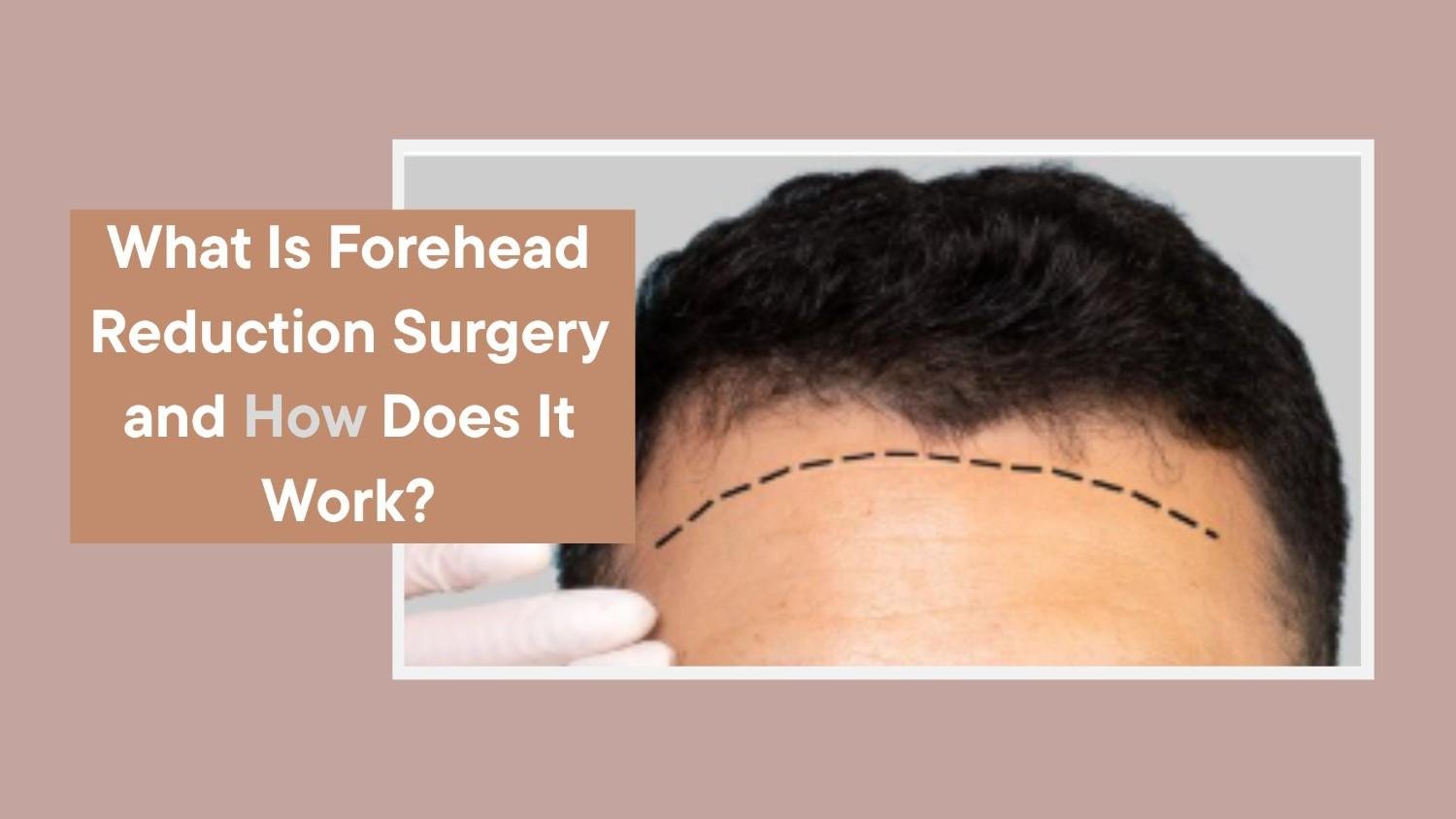Does my forehead look too big? Why does my hairline sit so high up? If you’ve ever asked yourself these questions while looking in the mirror or seeing a photo, you’re not alone. A high forehead or receding hairline can disrupt the balance of your face and impact your self-confidence. Whether caused by genetics, hair loss, or natural anatomy, many people seek a solution. One surgical option that addresses this concern is forehead reduction surgery, also called hairline lowering surgery. This procedure offers a permanent way to reshape your facial proportions by moving the hairline forward and reducing the visible height of the forehead.
This article explains how the procedure is performed, who it’s suitable for, and how it compares to other treatment options, such as hair restoration procedures
Understanding Forehead Reduction Surgery
Forehead reduction surgery is a cosmetic procedure designed to lower the position of the hairline, thereby reducing the height of the forehead. The goal is to create better facial balance and proportions, particularly in individuals who feel that their forehead appears too tall or dominant. The procedure involves removing a strip of forehead skin and advancing the scalp forward, thereby shortening the forehead height. This results in a lowered hairline that can change the way the face is framed.
This transformative procedure—especially when performed using advanced hairline hair transplant techniques—can effectively lower the hairline, enhance facial symmetry, and deliver long-lasting, natural-looking results.
How Does Forehead Reduction Surgery Work?
The surgery typically follows these key steps:
1. Pre-Surgical Assessment
A detailed evaluation is necessary to determine whether the patient is a suitable candidate for the procedure. Important factors include:
- Scalp laxity (how flexible the scalp is)
- Hairline shape and density
- Overall facial structure
- Hair loss pattern (if any)
Scalp laxity plays a central role in determining how much the hairline can be moved forward safely without excessive tension.
2. Planning the New Hairline
The surgeon works with the patient to map out the desired hairline shape and placement. The aim is to ensure the new hairline aligns well with the individual’s natural features.
3. Surgical Technique
- A trichophytic incision is made along the existing hairline. This specific type of incision encourages hair to grow through the scar line, helping to conceal it over time.
- The scalp is gently loosened and advanced to the new position.
- Excess forehead skin is removed.
The surgery is typically performed under local anesthesia with sedation or, in some cases, general anesthesia. It usually takes between 2 and 3 hours.
Who Is a Good Candidate?
Forehead reduction surgery is most appropriate for individuals who meet the following criteria:
- Have a naturally high hairline or large forehead
- Possess adequate scalp laxity to allow forward advancement
- Have a stable hairline
- Are in overall good health
It may not be suitable for individuals with tight scalps, significant hair loss, or those prone to keloid scarring. In such cases, alternatives like hair restoration procedures may be considered.
Important Considerations Before Surgery
Before proceeding with forehead reduction surgery, it is essential to:
- Undergo a detailed medical and scalp evaluation
- Discuss expectations and limitations clearly
- Consider future hair loss and its impact on results
- Explore non-surgical alternatives if surgery isn’t ideal
It’s also important to recognize that the success of the procedure depends not only on the surgical technique but also on proper healing and long-term hair maintenance.
Conclusion
Forehead reduction surgery is a surgical method used to lower a high hairline and reduce the perceived height of the forehead. It offers permanent and immediate results for individuals who are appropriate candidates, particularly those with adequate scalp laxity and stable hair growth. Hair restoration procedures such as hairline transplants may provide a more flexible or less invasive alternative for others, especially when future hair loss is a concern.
If you’re considering forehead reduction surgery or hairline restoration, consult a board-certified specialist to explore your personalized options in Palm Desert. A thorough evaluation will help determine the safest and most effective approach for your goals.
Frequently Asked Questions (FAQs)
1. Is forehead reduction surgery painful?
Most patients report minimal discomfort during the procedure due to local anesthesia and sedation. Mild soreness or tightness may occur afterwards, which can be managed with prescribed medications.
2. How long is the recovery period after forehead reduction surgery?
Initial recovery typically takes 7–10 days, during which time swelling and bruising may be present. Most people return to normal activities within two weeks, although full healing may take several months.
3. Can men and women both undergo forehead reduction surgery?
Yes, both men and women can be candidates. However, men with active or progressing hair loss may need a different approach or might be better suited for hair restoration techniques.
4. Will the hair grow normally along the new hairline?
Yes. Hair growth typically resumes normally along the incision line, especially if an advanced hairline hair transplant is used. This allows hair to grow through the scar, resulting in a more natural appearance.





